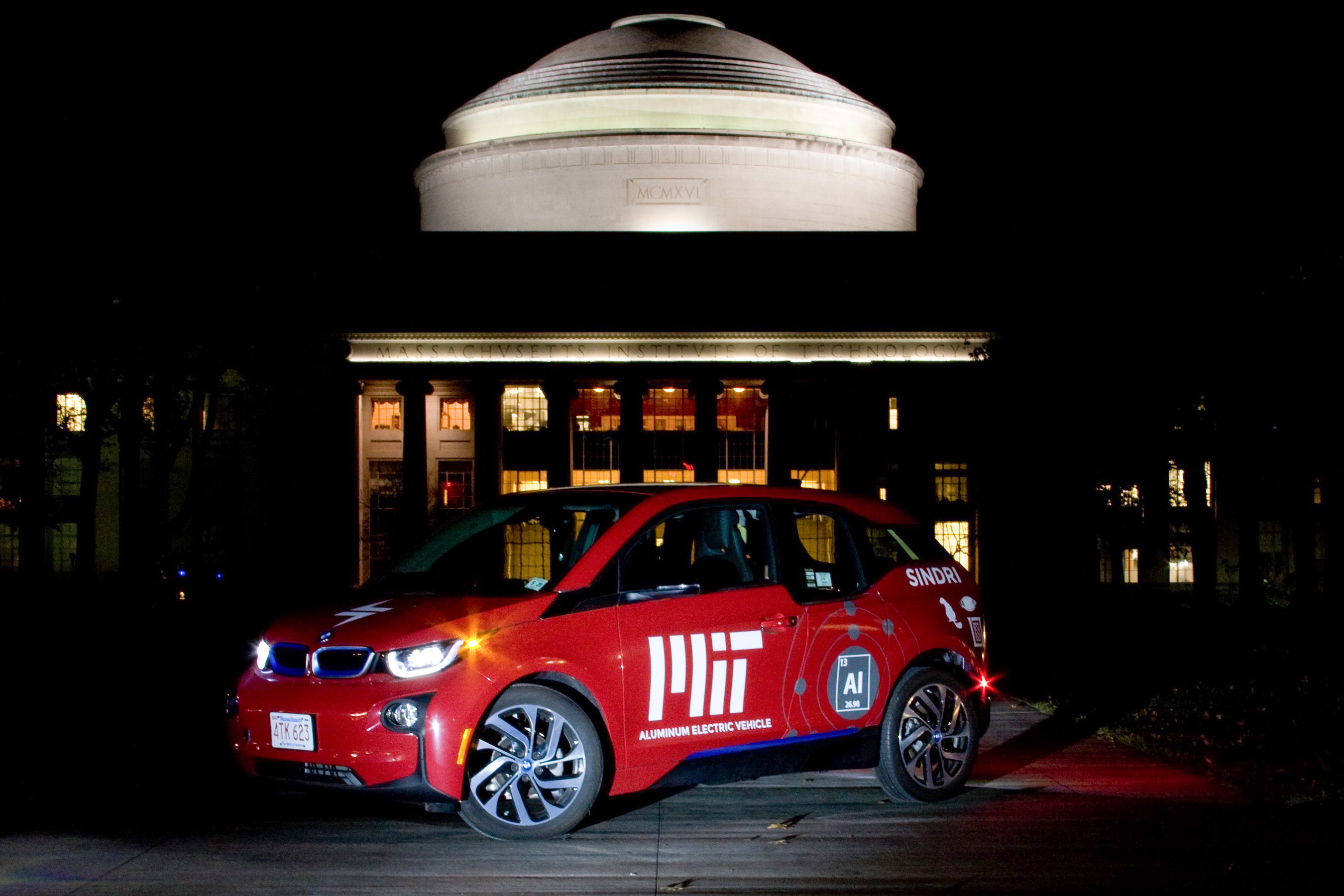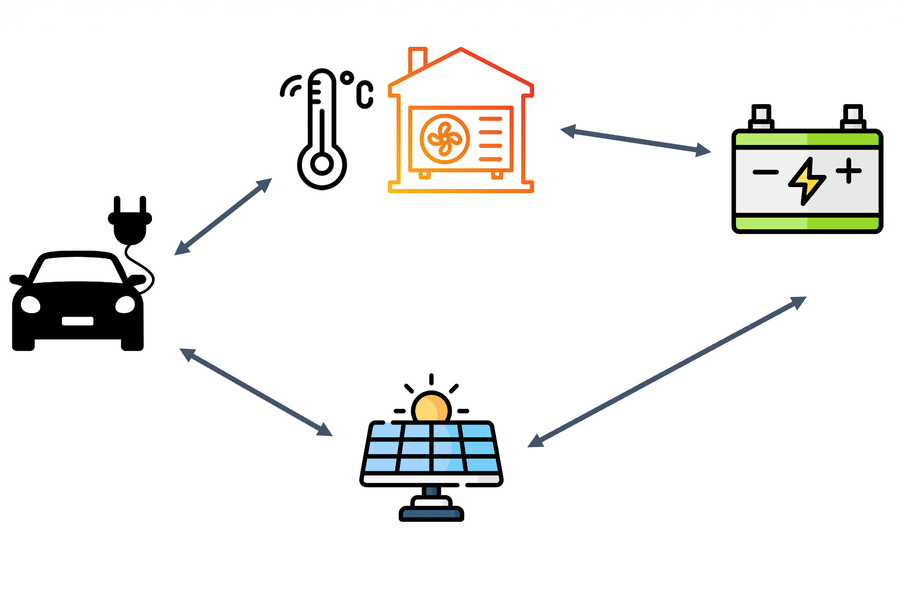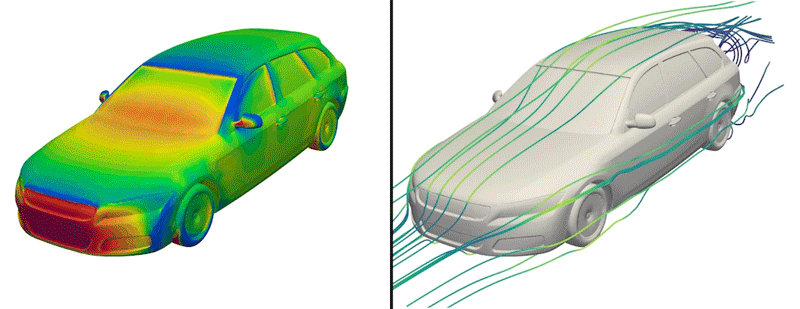Study shows making hydrogen with soda cans and seawater is scalable and sustainable
Hydrogen has the potential to be a climate-friendly fuel since it doesn’t release carbon dioxide when used as an energy source. Currently, however, most methods for producing hydrogen involve fossil fuels, making hydrogen less of a “green” fuel over its entire life cycle.
A new process developed by MIT engineers could significantly shrink the carbon footprint associated with making hydrogen.
Last year, the team reported that they could produce hydrogen gas by combining seawater, recycled soda cans, and caffeine. The question then was whether the benchtop process could be applied at an industrial scale, and at what environmental cost.
Now, the researchers have carried out a “cradle-to-grave” life cycle assessment, taking into account every step in the process at an industrial scale. For instance, the team calculated the carbon emissions associated with acquiring and processing aluminum, reacting it with seawater to produce hydrogen, and transporting the fuel to gas stations, where drivers could tap into hydrogen tanks to power engines or fuel cell cars. They found that, from end to end, the new process could generate a fraction of the carbon emissions that is associated with conventional hydrogen production.
In a study appearing today in Cell Reports Sustainability, the team reports that for every kilogram of hydrogen produced, the process would generate 1.45 kilograms of carbon dioxide over its entire life cycle. In comparison, fossil-fuel-based processes emit 11 kilograms of carbon dioxide per kilogram of hydrogen generated.
The low-carbon footprint is on par with other proposed “green hydrogen” technologies, such as those powered by solar and wind energy.
“We’re in the ballpark of green hydrogen,” says lead author Aly Kombargi PhD ’25, who graduated this spring from MIT with a doctorate in mechanical engineering. “This work highlights aluminum’s potential as a clean energy source and offers a scalable pathway for low-emission hydrogen deployment in transportation and remote energy systems.”
The study’s MIT co-authors are Brooke Bao, Enoch Ellis, and professor of mechanical engineering Douglas Hart.
Gas bubble
Dropping an aluminum can in water won’t normally cause much of a chemical reaction. That’s because when aluminum is exposed to oxygen, it instantly forms a shield-like layer. Without this layer, aluminum exists in its pure form and can readily react when mixed with water. The reaction that occurs involves aluminum atoms that efficiently break up molecules of water, producing aluminum oxide and pure hydrogen. And it doesn’t take much of the metal to bubble up a significant amount of the gas.
“One of the main benefits of using aluminum is the energy density per unit volume,” Kombargi says. “With a very small amount of aluminum fuel, you can conceivably supply much of the power for a hydrogen-fueled vehicle.”
Last year, he and Hart developed a recipe for aluminum-based hydrogen production. They found they could puncture aluminum’s natural shield by treating it with a small amount of gallium-indium, which is a rare-metal alloy that effectively scrubs aluminum into its pure form. The researchers then mixed pellets of pure aluminum with seawater and observed that the reaction produced pure hydrogen. What’s more, the salt in the water helped to precipitate gallium-indium, which the team could subsequently recover and reuse to generate more hydrogen, in a cost-saving, sustainable cycle.
“We were explaining the science of this process in conferences, and the questions we would get were, ‘How much does this cost?’ and, ‘What’s its carbon footprint?’” Kombargi says. “So we wanted to look at the process in a comprehensive way.”
A sustainable cycle
For their new study, Kombargi and his colleagues carried out a life cycle assessment to estimate the environmental impact of aluminum-based hydrogen production, at every step of the process, from sourcing the aluminum to transporting the hydrogen after production. They set out to calculate the amount of carbon associated with generating 1 kilogram of hydrogen — an amount that they chose as a practical, consumer-level illustration.
“With a hydrogen fuel cell car using 1 kilogram of hydrogen, you can go between 60 to 100 kilometers, depending on the efficiency of the fuel cell,” Kombargi notes.
They performed the analysis using Earthster — an online life cycle assessment tool that draws data from a large repository of products and processes and their associated carbon emissions. The team considered a number of scenarios to produce hydrogen using aluminum, from starting with “primary” aluminum mined from the Earth, versus “secondary” aluminum that is recycled from soda cans and other products, and using various methods to transport the aluminum and hydrogen.
After running life cycle assessments for about a dozen scenarios, the team identified one scenario with the lowest carbon footprint. This scenario centers on recycled aluminum — a source that saves a significant amount of emissions compared with mining aluminum — and seawater — a natural resource that also saves money by recovering gallium-indium. They found that this scenario, from start to finish, would generate about 1.45 kilograms of carbon dioxide for every kilogram of hydrogen produced. The cost of the fuel produced, they calculated, would be about $9 per kilogram, which is comparable to the price of hydrogen that would be generated with other green technologies such as wind and solar energy.
The researchers envision that if the low-carbon process were ramped up to a commercial scale, it would look something like this: The production chain would start with scrap aluminum sourced from a recycling center. The aluminum would be shredded into pellets and treated with gallium-indium. Then, drivers could transport the pretreated pellets as aluminum “fuel,” rather than directly transporting hydrogen, which is potentially volatile. The pellets would be transported to a fuel station that ideally would be situated near a source of seawater, which could then be mixed with the aluminum, on demand, to produce hydrogen. A consumer could then directly pump the gas into a car with either an internal combustion engine or a fuel cell.
The entire process does produce an aluminum-based byproduct, boehmite, which is a mineral that is commonly used in fabricating semiconductors, electronic elements, and a number of industrial products. Kombargi says that if this byproduct were recovered after hydrogen production, it could be sold to manufacturers, further bringing down the cost of the process as a whole.
“There are a lot of things to consider,” Kombargi says. “But the process works, which is the most exciting part. And we show that it can be environmentally sustainable.”
The group is continuing to develop the process. They recently designed a small reactor, about the size of a water bottle, that takes in aluminum pellets and seawater to generate hydrogen, enough to power an electric bike for several hours. They previously demonstrated that the process can produce enough hydrogen to fuel a small car. The team is also exploring underwater applications, and are designing a hydrogen reactor that would take in surrounding seawater to power a small boat or underwater vehicle.
This research was supported, in part, by the MIT Portugal Program.

© Credit: Courtesy of the researchers


